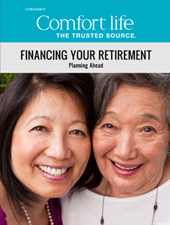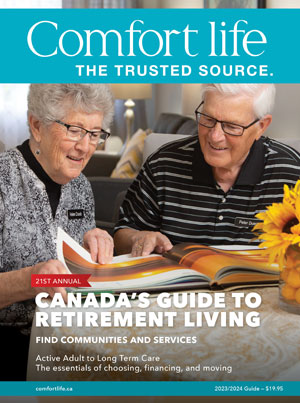10 top RRSP Tips
 It's that time of year again - time to make the most of your RRSP contributions before the clock strikes twelve on March 1, 2011.
It's that time of year again - time to make the most of your RRSP contributions before the clock strikes twelve on March 1, 2011.Before you start, here's a quick checklist:
- To qualify as a 2010 deduction, contributions to your personal or spousal RRSP must be made on or before March 1, 2011.
- Determine your RRSP contribution limit for 2010 by referring to your previous year’s Notice of Assessment from the Canada Revenue Agency (CRA), or visit the CRA website at www.cra-arc.gc.ca.
- Determine how much, if any, you have already contributed to your RRSP for 2010.
- You can take advantage of any unused 2010 RRSP room up to your contribution limit. You will receive a 2010 tax deduction for this amount as long as the contribution is made by the March 1, 2011 deadline.
10 Top Tips:
1. Early retirement and my RRSP
Thinking of early retirement? How and when can you start using your RRSP?
“While there are no restrictions on accessing your RRSP account at any time, all withdrawals are immediately taxable,” advises Chartered Accountant Robin Cyna, Senior Manager, Tax Services, Grant Thornton LLP.
“Make sure you determine the best timing and method to access your RRSP accounts.”
As you will need your registered and non-registered savings to support you for the remainder of your retirement, you must weigh the cost of drawing on your RRSP resources early and losing the accumulation of tax-deferred earnings. To minimize this cost, it may be prudent to use non-registered assets first, resorting to your RRSP only when necessary. Alternatively, you might also consider using a Tax Free Savings Account, or choose a withdrawal method that only draws on a portion of the RRSP per-year and keeps the remainder in a tax-deferred status.
“Another issue is the method of withdrawing the funds,” says Cyna. “At any point you may either choose to take your RRSP funds as a cash payment, transfer the funds into a Registered Retirement Income Fund, or purchase an annuity. Each method has its own benefits and restrictions, but regardless of the method chosen, the funds will be included as part of your taxable income in the year they are withdrawn.”
2. The strategy behind a spousal RRSP
Are you the highest wage earner in your family? Do you expect to generate the bulk of your family’s retirement income? If so, then a spousal RRSP can be an excellent strategy as it helps provide more equal retirement income and tax savings, according to Chartered Accountant & Portfolio Manager Loren Francis of Barometer Capital Management in Toronto.
“Even though the new pension-splitting rules may allow a split of income from a single RRSP, a spousal RRSP can be beneficial when there is an age gap between spouses, and/or for estate-planning purposes.
“Different tax rates apply to couples versus individuals. The result is that a couple receiving two smaller incomes at retirement will be taxed at a lower rate than one individual claiming the total household income. When you contribute to a spousal RRSP, you will also get an immediate tax deduction – just remember that the contributions are owned and controlled by your spouse.
“If you are a married couple or living in a common law relationship, and have earned income or unused RRSP deduction room, you can also contribute to a spousal RRSP until December 31 of the year that your spouse or partner turns 71,” Francis advises.
3. Smaller house — bigger RRSP?
If you’re selling the family home to move to a less expensive one, consider all the options before you stash the extra cash in your RRSP.
“Money from the sale of a principal residence is tax-free,” says Sidney Laufer, a Chartered Accountant in Vaughan. “But that’s where the commonality ends. Everyone must examine his or her particular circumstances and decide how to use the proceeds in a way that’s best for them.
“If you’re purchasing a less expensive residence, any excess funds can be applied to an individual or spousal RRSP until the maximum contribution level is reached,” Laufer explains.
To help reduce any extra income tax that you may have to pay when the RRSP funds are eventually withdrawn, Laufer suggests the following as one possible strategy: At age 65, each spouse can transfer approximately $10,000 from the RRSP to a Registered Retirement Income Fund (RRIF). Then, each partner can withdraw $2,000 from the RRIF each year until age 71. At that point the remaining RRSP funds can be moved to the RRIF, assuming both people will receive only Old Age and Canada pensions, and nothing from past employers.
If you’re planning to rent rather than buy another home, Laufer suggests you prepare a new financial budget that matches your new living arrangements. And, regardless of your situation, consult a Chartered Accountant first to be sure that you understand all the options and implications before purchasing any investments – RRSPs or otherwise.
4. Mortgage payments vs. saving for retirement
Should you focus on paying down your mortgage or contributing to an RRSP?
“Mathematically, you can calculate which alternative is better, given assumptions about mortgage rates and the rate of return in your RRSP. Most analysts conclude that it is better to pay off your mortgage first, assuming that the rate of return of the investment in your RRSP does not exceed your mortgage rate,” says Chartered Accountant Ann M. Donohue, a Partner with Campbell Lawless Professional Corporation in Toronto.
“There are many factors that you should also consider. Will you be able to catch up on your RRSP contributions once you’ve paid off your mortgage? Will you need the funds in your RRSP for emergencies? Do you want to diversify your investments rather than place all of your available cash in your home?
“Keep in mind that having the discipline to save money, either by paying down your mortgage or putting money in your RRSP, will mean that you will increase your net worth in the long run. Both paying off your mortgage and saving for retirement are important components of any good financial plan,” advises Donohue.
5. RRSP can help relatives with disabilities
For some time, there have been provisions to permit the tax-free rollover of a deceased person’s RRSP to that of a spouse, child or grandchild who, due to disability, was financially dependent on the deceased person.
“But this year, the 2010 Federal Budget has extended these provisions, giving more help to those who care for relatives with disabilities,” says Chartered Accountant John R. Mott of Toronto. “Now the RRSP rollovers can also be made to the Registered Disability Savings Plan (RDSP) of a child or grandchild who is financially dependent on the taxpayer due to mental or physical infirmity.”
The amount rolled cannot exceed the beneficiary’s RDSP contribution room, which currently has a lifetime maximum of $200,000. Rolled amounts won’t be eligible for Canada Disability Savings Grants, and will be taxable in the beneficiary’s hands when withdrawn, just like RRSP funds.
“This rollover treatment applies to the RRSPs of people who passed away after March 3, 2010,” explains Mott. “Prior to this and for deaths since 2007, there were other ways to transfer RRSP funds to children or grandchildren with disabilities. In many cases, these provisions can still apply and can be claimed, providing taxpayers make the appropriate election before 2012.”
Taxpayers wishing to take advantage of these provisions should review their wills and make the appropriate amendments, if needed.
6. What size RRSP do I need to retire?
Determining how much you need to retire can be baffling. Where do you start?
“Assess your financial situation and personal needs,” advises Chartered Accountant David Trahair, author of Enough Bull: How to Retire Well Without the Stock Market, Mutual Funds or Even an Investment Advisor.
“The general rule is that you need 70 per cent of your pre-retirement income, but each situation is different. Figure out your expected retirement income and expenses. Do you own your own home, or will you have rental or mortgage payments? Do you have other outstanding debt or financial responsibilities, such as supporting an aging parent?
“Also consider your RRSP investments. Do you know what your annualized Personal Rate of Return (PRR) has been since you opened your RRSP? Many brokerage firms don’t provide this information on their monthly statements,” advises Trahair.
“Get rid of any debt at a higher interest rate. For example, if your PRR has been two per cent a year on average since you started your RRSP and your mortgage is at six per cent, then simple analysis shows that paying off the mortgage leaves you further ahead.
“Remember that your RRSP is supplemented by the Canada Pension Plan (CPP) and Old Age Security (OAS). If your RRSP is projected to provide enough income during retirement, you may want to optimize its size so it doesn’t spit out too much income and cause a clawback of Old Age Security.
7. When should I start saving for retirement?
To paraphrase an old saying: If you have to ask, you probably should have started already.
“The earlier you start, the earlier your money can start compounding and the longer you’ll have it working for you,” says Chartered Accountant Gregory R. Clarke, Partner with SB Partners LLP in Burlington. “Investment income is tax-free in an RRSP. But it is taxed when you take it out.”
To start a Registered Retirement Savings Plan, you must have a social insurance number (SIN) and “earned income”. The amount of your previous year’s income is used to determine your contribution room for the next tax year. In 2010, each taxpayer’s contribution room is 18 per cent of last year’s earned income, to a maximum of $22,000, less any required pension adjustments. Any unused contribution room from previous years is carried forward.
“The best reason to start an RRSP early is that it gets young people into the habit of saving,” explains Clarke. “Even if it’s a couple hundred dollars a year, it helps create a mindset that saving is important.”
When an idea like that gets transformed into steady, continuous action, a secure financial future can’t be far behind.
8. How long can I contribute to an RRSP?
“You can contribute to an RRSP up to and including the year you turn 71,” says Chartered Accountant Carmelo Linardi, Carmelo Linardi Professional Corporation in Aurora.
However, you must have enough contribution room, generated from employment, self-employment and other eligible sources of income earned in the year prior to the year you will make the contribution. At the end of the year you turn 71, the RRSP must be converted into a Registered Retirement Income Fund or an annuity.
“Remember, even if your age prevents you from contributing to your own RRSP, you can still contribute to a spousal RRSP, as long as you continue to generate RRSP contribution room and your spouse is 71 or under (at the end of the year) in the year you make the contribution,” advises Linardi.
If you make a spousal contribution, your spouse can still make a contribution too, as long as he or she has his/her own contribution room. You also get to deduct the amount that you contribute to a spousal RRSP from your income, while spouses get to deduct the amount of their RRSP contribution from their income.
9. The real costs of RRSPs
Registered Retirement Savings Plans are a terrific way to save for retirement and defer taxes. But choose your investment vehicles carefully. Many institutions charge substantial fees to both set up and operate those vehicles.
“The costs to administer RRSPs or other investment plans vary widely, depending on the nature of the plan and the level of service you receive,” says Chartered Accountant François Ménard, an investment advisor with RBC Investments in Gloucester.
Some of the least expensive options are managed mutual fund portfolios. These plans are usually set up with a licensed representative who invests your money in a number of different mutual funds held in your RRSP account. Your representative provides some monitoring and advice, and in return takes a small percentage — usually around 1.5 per cent — of your total investment as a fee.
But check carefully and ask questions. Sometimes, these plans also include commission charged at the purchase or sale of the funds, and/or fees to transfer-in, transfer-out, and administer the fund.
At the higher end, professional fees can be about 2.5 per cent of the total value of your account, with an annual administration fee of perhaps $150, and transaction costs of two per cent or more for any trades that you make.
But there are lower-cost options, too. “There’s a lot you can do yourself,” advises Ménard. “Plenty of information exists for self-managing your RRSPs and investments.”
Many Canadian banks, insurance companies and other financial institutions have help available on their websites. Independent sources like Canadian Diversified Investor (www.canadiandiversifiedinvestor.com) and Efficient Market Canada (http://www.efficientmarket.ca) also offer a broad range of tools, tips and advice concerning RRSPs, investments, plans and costs.
10. RRSP vs. Tax Free Savings Account
It’s been three years since the Tax Free Savings Account was introduced to Canadians. Is it still a viable alternative to an RRSP?
“It all depends on your income tax rate at the time when contributions are made, as compared to the rate during the withdrawal phase,” explains Chartered Accountant Ken Lancaster, Tax Partner with MacGillivray Hamilton.
“If the two rates are identical, then the TFSA is a preferred option because it is more flexible and withdrawals do not affect income-tested benefits.
“Many individuals fall into the category where their income tax rates in the accumulation phase are higher. That’s because they are in their peak earning years and are paying high income tax rates. Presumably, when they retire, they will be paying much lower income taxes. Since their contribution income tax rate is much higher than the withdrawal income tax rate, an RRSP contribution is probably the preferred option for this category of individuals,” says Lancaster.
“For the few Canadians who pay a higher rate in their withdrawal years than in their contribution years, a TFSA is probably the better choice.”
Courtesy Chartered Accountants of Ontario


